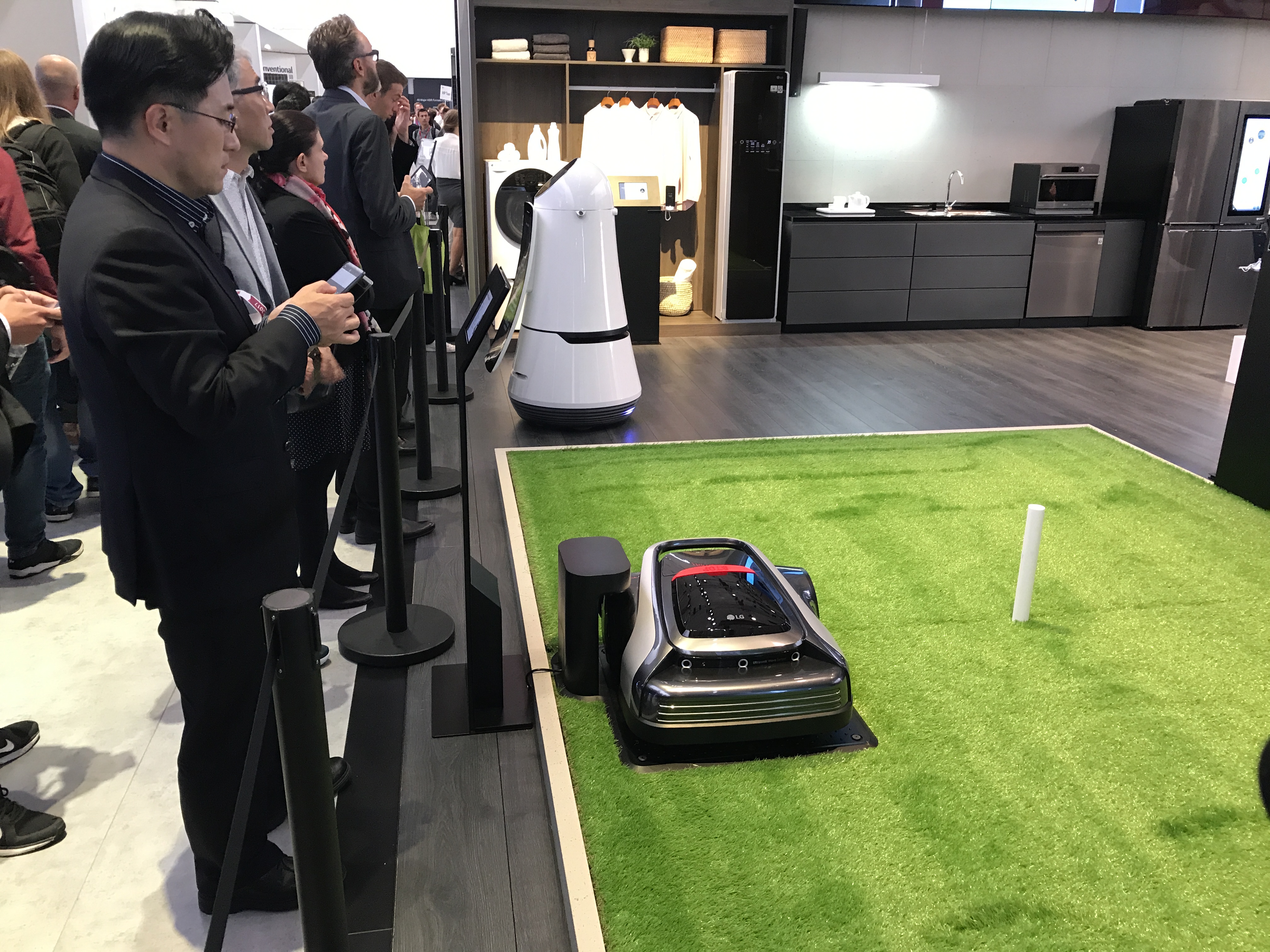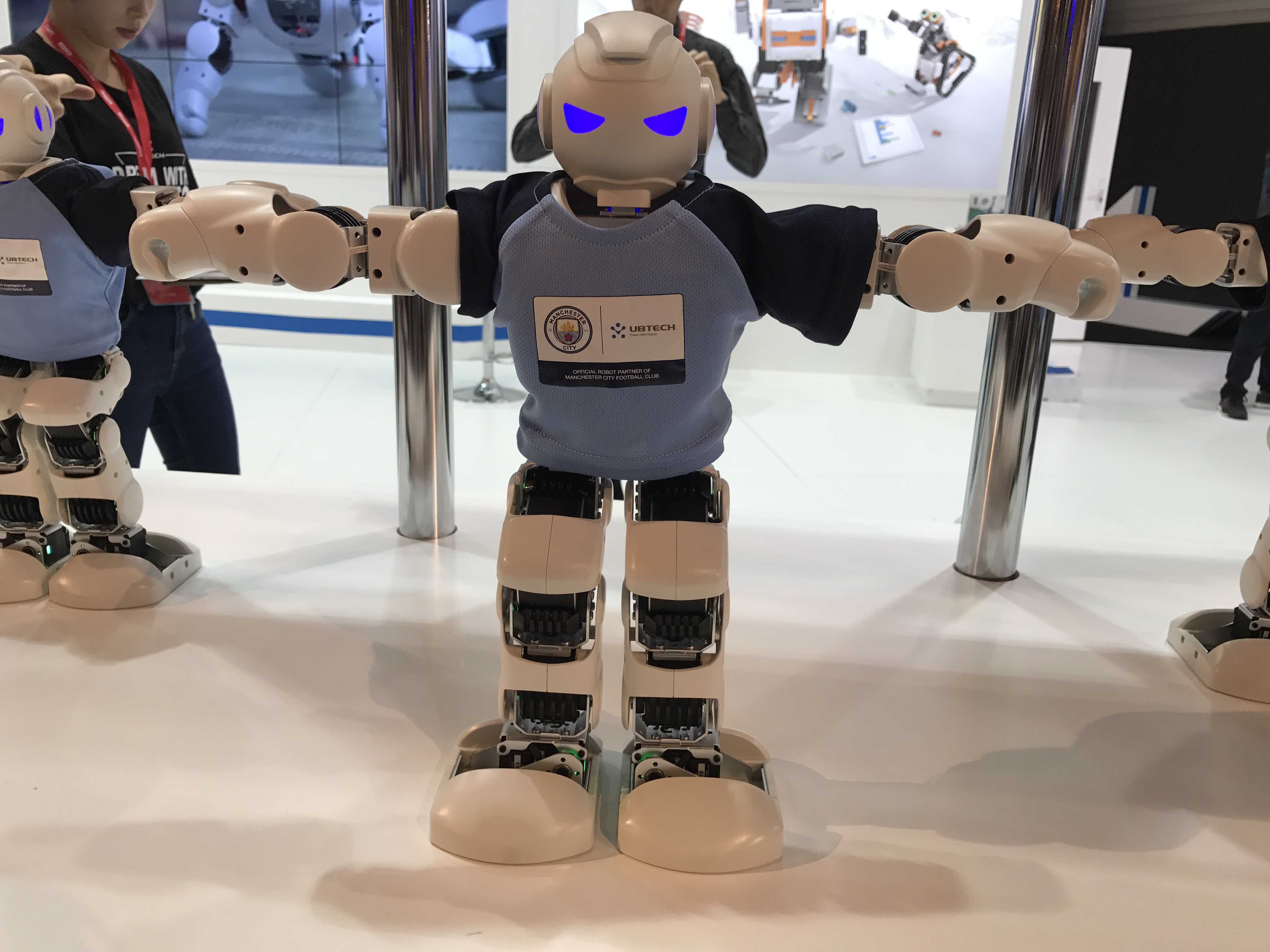
Technology conventions such as IFA often serve as a window into the near future, with the concepts on the show floor offering a glimpse of what gadgets are in the pipeline.
The ubiquity of virtual assistants, drones and virtual reality were all first flagged at shows like IFA, so it’s far from a guessing game.
And a striking trend has been appearing in every corner of the convention centre this year – robots.
Robotics have been becoming increasingly prevalent in the tech world for some time now, partly driven by the rise of artificial intelligence and machine learning. Once inanimate devices have been coming to life and learning as they do.
Only at IFA is the sight of robots being ferried between buildings normal behaviour #IFA2017 pic.twitter.com/4MiuAvq2yG
— Martyn Landi (@MartynLandi) September 1, 2017
Nowhere is this more obvious than IFA, where smart speakers housing Google Assistant and Amazon’s Alexa dot most of the major booths.
But another side of robotics is also big here – the more traditional idea of humanoid helper bots.
 (Martyn Landi/PA)
(Martyn Landi/PA)
LG has its Airport Guide Robot on display, which can scan boarding passes and give passengers gate information as needed. It’ll even walk you to your gate if you’re unsure of where to go.
The Korean firm also had its robotic lawn mower, which can be controlled via Google Assistant or Alexa, on display.
 (Martyn Landi/PA)
(Martyn Landi/PA)
Smaller firms including Ubtech and Qihan also had helper bots on show – Ubtech’s Alpha1 Pro is designed for entertainment as well as education and quite enjoys dancing to Gangnam Style.
But perhaps the most striking use of robotics came from Panasonic, who had a concept autonomous fridge among the devices on display at its IFA booth.
A glimpse of Panasonic’s concept robotic, mobile fridge, on show at #IFA2017 pic.twitter.com/6JuMnG45g4
— Martyn Landi (@MartynLandi) September 1, 2017
The fridge, which can move independently, has voice and touch controls which enable it to move to a specific location when called or summoned.
In short, it’s a smart fridge that can come to you if you call it.
The concept is an interesting step for robotics – another level up in proactivity from the smart fridges that have been launching in recent years in that now appliances are coming to you, and that changes the dynamic of the home considerably.
If Panasonic and co are spending time and money on developing this type of robot, expect to see them eventually reach the market in some form, and the house of someone near you sooner rather than later.
Five years ago the concept that became the Amazon Echo or Google Home seemed outlandish and far-future, yet look where we are.
Robotics are likely to go the same way if this year’s IFA is anything to go by.


Why are you making commenting on The Herald only available to subscribers?
It should have been a safe space for informed debate, somewhere for readers to discuss issues around the biggest stories of the day, but all too often the below the line comments on most websites have become bogged down by off-topic discussions and abuse.
heraldscotland.com is tackling this problem by allowing only subscribers to comment.
We are doing this to improve the experience for our loyal readers and we believe it will reduce the ability of trolls and troublemakers, who occasionally find their way onto our site, to abuse our journalists and readers. We also hope it will help the comments section fulfil its promise as a part of Scotland's conversation with itself.
We are lucky at The Herald. We are read by an informed, educated readership who can add their knowledge and insights to our stories.
That is invaluable.
We are making the subscriber-only change to support our valued readers, who tell us they don't want the site cluttered up with irrelevant comments, untruths and abuse.
In the past, the journalist’s job was to collect and distribute information to the audience. Technology means that readers can shape a discussion. We look forward to hearing from you on heraldscotland.com
Comments & Moderation
Readers’ comments: You are personally liable for the content of any comments you upload to this website, so please act responsibly. We do not pre-moderate or monitor readers’ comments appearing on our websites, but we do post-moderate in response to complaints we receive or otherwise when a potential problem comes to our attention. You can make a complaint by using the ‘report this post’ link . We may then apply our discretion under the user terms to amend or delete comments.
Post moderation is undertaken full-time 9am-6pm on weekdays, and on a part-time basis outwith those hours.
Read the rules here